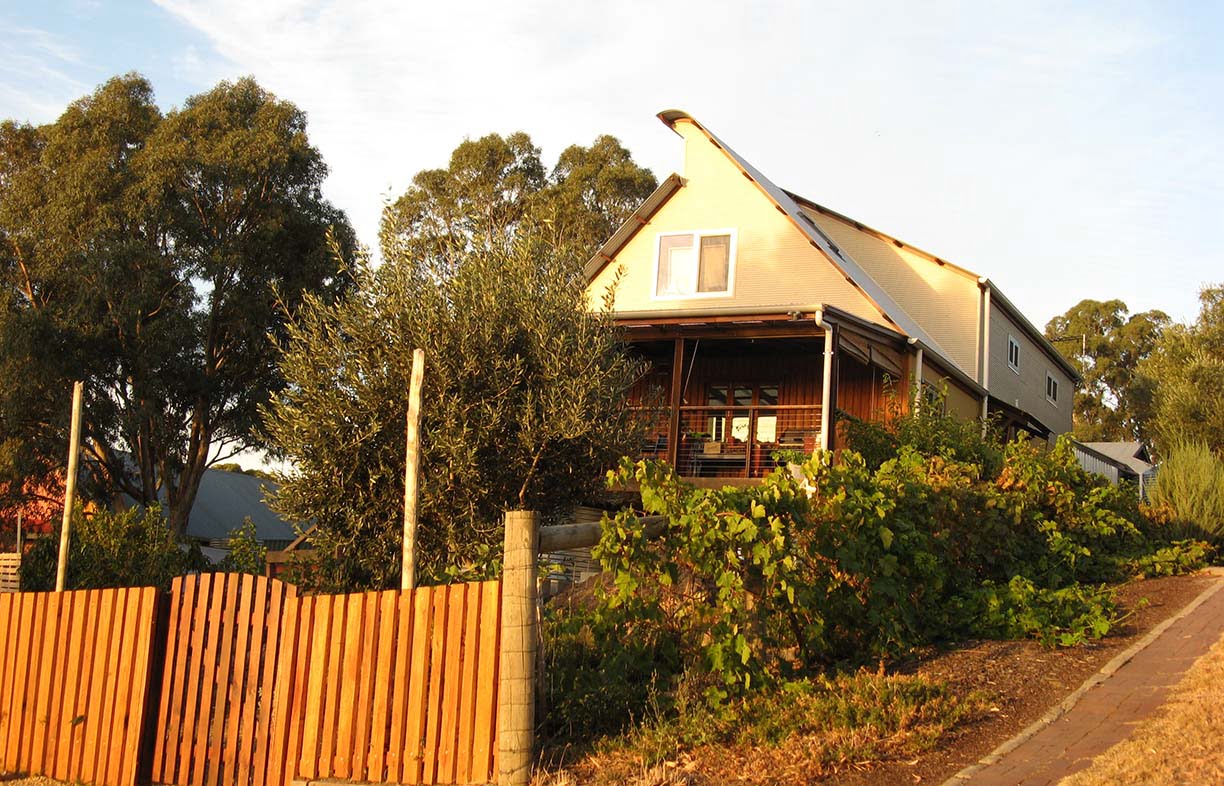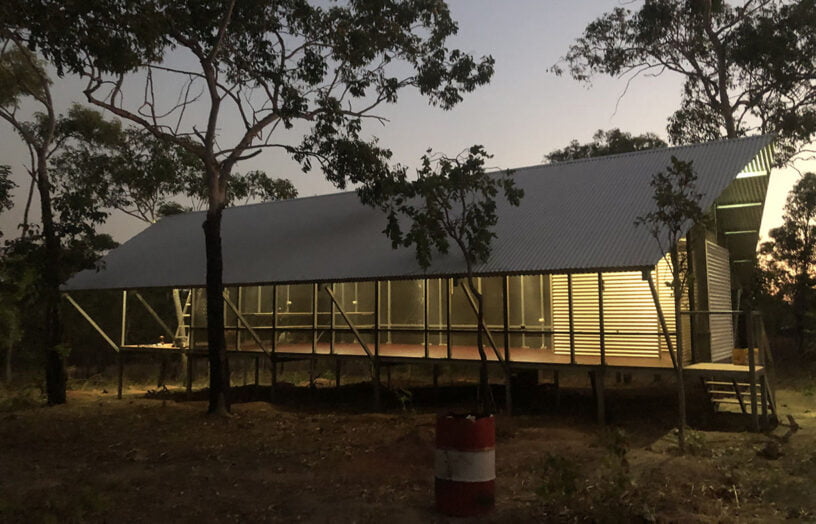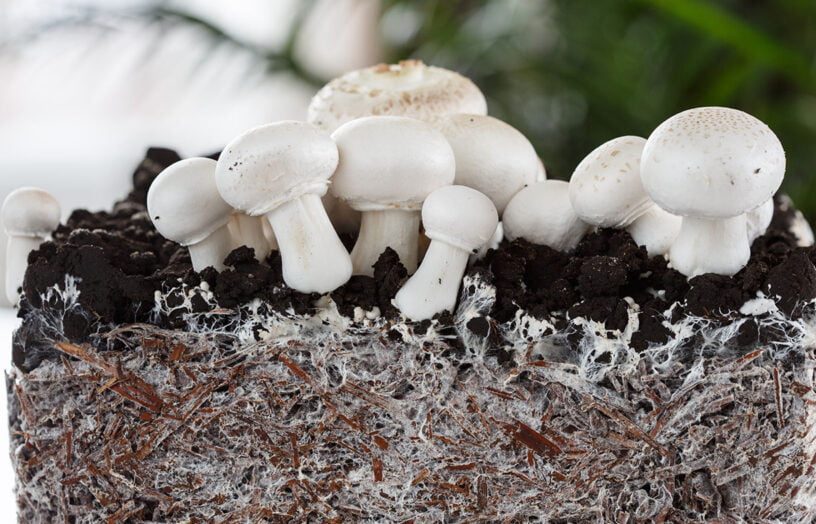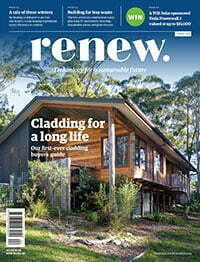Cladding case study: Timber cottage with low-maintenance twist

This house in Willunga, SA, uses timber cladding for a cottage feel, but adds low-maintenance Colorbond and magnesium oxide board for the hard-to-reach areas.
Jason Garrood and Susan Greenwood are old hands at sustainable building. Having previously built three houses, they knew what features they wanted when it came to cladding their new home in Willunga in 2017, which Jason describes as their “latest/last home”. As they’re now retired, a priority was easy maintenance as they age. Equally important were sustainability (“we wanted a material with a fairly low carbon input”) and aesthetics (“we wanted our house to have a cottagey appearance”).
For appearance they preferred timber, although, aware of its regular re-oiling requirements, they decided to use it only for the more visible walls with easy access. They initially sought to use the same salvaged cypress pine that they’d used in their previous house in Stirling, but it wasn’t available at the time. As a compromise, they sourced plantation Victorian silvertop ash, which is designated as a fire-resistant timber, important as their house is located near the border of a bushfire zone. The timber is radially cut to reduce milling waste, and installed in a neat batten and board pattern, which they love the look of—it adds a warmth to the house finish. It’s protected with two coats of Intergrain natural oil, applied themselves (“we helped a lot with the build”) before the boards were installed.
For the less visible areas on the ground floor and lower level, they chose to use magnesium oxide board. “We thought that it would be good to try it for its low carbon manufacture,” says Jason. [Ed note: Magnesium oxide boards need to be carefully selected to ensure they are water resistant, as they can degrade if exposed to humid air in the ventilation gap between boards and frame.]
Their builder suggested using a specially thick paint (Dulux Acra-Tex) on the boards: “It came up well and looks just like a textured rendered wall.”
For the walls around the skillion roof which were too high for them to maintain at all, they decided on Colorbond ‘mini orb’—a corrugated iron look. “We were happy to discover a new version with wider ‘waves’ which looks less busy than the traditional profile, sort of a ‘midi orb’,” says Jason.
They’re very happy with the aesthetics of all their choices. Jason says, “Choosing colours is another whole story, but we think it has all turned out looking really good!” Having been there almost two years now, they’ve recently had to re-oil the timber, along with tightening up all the screws as the timber had shrunk (“it was put up basically green,” says Jason). They’re not expecting to need to re-paint the magnesium oxide board, but they’ll keep an eye on it.
As an aside, they also used the magnesium oxide board for their decking, combined with a Spa-N-Deck acrylic wood finish. “It’s terrific; there’s a bit of grain on the surface and people often mistake it for timber,” says Jason. They’ve just re-coated that as it does wear with the foot traffic—and they wanted it looking at its best for this year’s Sustainable House Day.
This case study accompanied our cladding buyers guide in Renew 149. To read the guide, you can buy a copy of the issue online, find it on newsstands, or become a subscriber.
Further reading
 Efficient homes
Efficient homes
Building for a changing climate
Are we building homes for the future, or for the past? Rob McLeod investigates how climate change is impacting home energy ratings and the way we build our homes.
Read more Efficient homes
Efficient homes
Remote communities leading the charge
We learn about four sustainability and renewable energy projects in remote Australia.
Read more Efficient homes
Efficient homes
Fungimentally different
Fiona Gray unearths the potential of mycelium homes.
Read more

